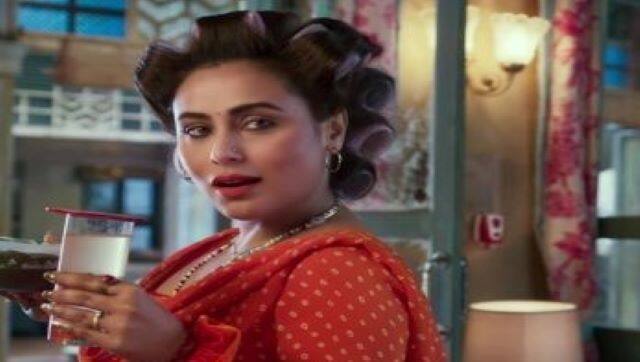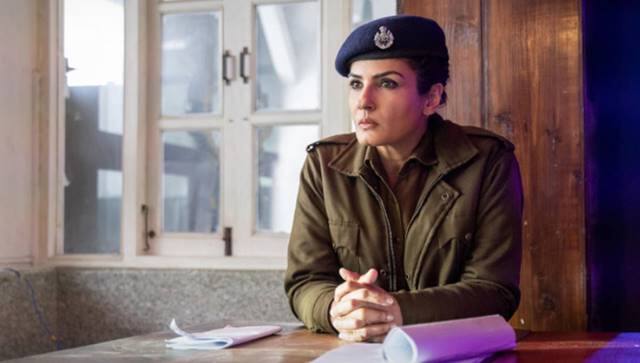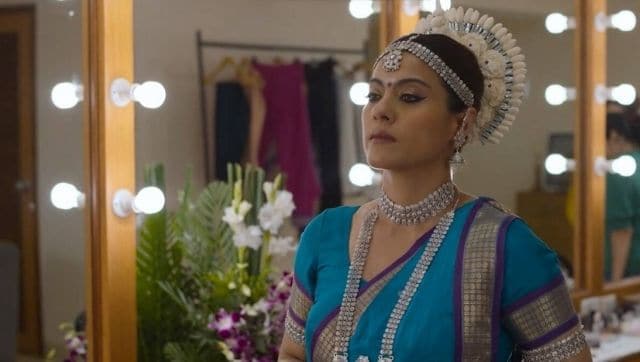A widowed mother single-handedly stands up to mob bosses who are out to settle scores with her family. A headstrong middle-aged female cop considering a sabbatical is suddenly tasked with investigating a high-profile case that ends up uncloaking deep secrets nestled within the woods. A former con-woman turned small-town homemaker returns to the game to reclaim her legacy from imposters. A famous dancer and single mother confronts repressed resentment to reduce the terms of estrangement in the relationship with her own mother. The names of the actors essaying these four roles on our (big and small) screens reads like a ’90s honour roll: Sushmita Sen ( _Aarya_ ), Raveena Tandon (Aranyak), Rani Mukerji ( _Bunty aur Babli 2_ ), and Kajol ( _Tribhanga_ ). It could very well be any year in the ’90s, when these four actresses were leading heroines, ruling hearts, scripts, and box office. But it is 2021. And Sen, Tandon, Mukerji, and Kajol are all well into their 40s — over a decade past the Hindi film industry’s standard expiry date for the careers of female actors. Their very existence in the movie and television line-up of the year is emblematic of a film industry that might slowly be unlearning its prejudiced mechanisms. Until five years ago, these four women would have ended up being supporting roles in movies and shows that focus on other important things. They would have been a distraction to the actual story, unfolding as a sub-plot that exists for the sake of existing. But in 2021, these women are endowed with a full-bodied existence — they are both the heroes and heroines of their own story, elevating these two movies and two shows with ample sincerity and resolve. [caption id=“attachment_10209841” align=“alignnone” width=“640”]  Rani Mukerji in Bunty Aur Babli 2[/caption] Besides being a charming throwback to all the actresses we loved before, the return of four of the most sought-after actresses of the ’90s, is also a sombre reality check of the change that Bollywood has witnessed as well as the changes it refuses to entertain between these two decades. For one, all four actresses essay roles closer to their age instead of being forced to play younger characters just to be in compliance with the fantasies of male audiences. You see, once actresses are in their 40s, they do not just become dispensable but also are considered seasonal character actors. Which is to say, roles stop being written for them. They are pushed to the background, and forgotten the same way characters in John Green novels fall in love: slowly and then all at once. Then, only when a film demands — which does not happen until a new-age filmmaker chooses to eschew Bollywood tradition — the coffins on their existence is temporarily lifted.
That four 40-year-old actresses of considerable acting repute co-existed on our screens this year in an industry that likes to ration their screen presence of middle-aged female actors, is nothing short of an artistic rebellion.
There is also the complicated, layered, and creatively satisfying arcs of each of their roles to be taken into account, considering that is a luxury that Bollywood is usually habituated to giving male leads. Sen’s turn in Aarya is invigorating, a performance so physically attuned and magnificent that it does not really need to depend on dialogue to create or sustain tension. Throughout two seasons of the show, Sen — last seen in a Hindi movie in 2010 — is allowed to build on a character that is both a hero and an anti-hero. Similarly, Aranyak, a Netflix murder mystery set in a fictional sleepy hill station, exists around Tandon’s Kasturi Dogra. In Patthar Ke Phool, her 1991 debut, the actress played the love interest of Suraj, a police inspector (Salman Khan), her existence in the movie, absolutely perfunctory. It only took the storytelling in Bollywood two whole decades to evolve to come to a place where Tandon could be offered the role of a police officer. Although Tandon’s performance, laborious in parts, is not as meticulous or effortless as that of Sen, it is not without effort. If anything, it would be foolish to write Tandon off after one middling performance. If anything, actresses, irrespective of their age and billing, should be allowed to fail, a necessary rite of passage in any artistic pursuit. [caption id=“attachment_10191921” align=“alignnone” width=“640”]  Raveena Tandon in Aranyak[/caption] Mukerji’s titular Babli provides an insight into a dissatisfied middle-aged female existence that has rarely been dissected on screen. On her part, the actress steps back into one of her career-defining roles with the enthusiasm and sneakiness of a 20-year-old newcomer. And Tribhanga may not involve the most seamless execution but it still envisions a starring role for Kajol that allows her to be more than her eccentricities. Still, there are cracks in the silver lining. For one, out of these four outings, only one — Bunty aur Babli 2 — is a theatrical release. In that it sees a middle-aged actress headlining a mainstream film as a commercially viable proposition. The rest of the three outings are streaming-platform releases. On one hand, it cements the digital medium’s reputation as a comparatively fairer playground for female actresses than the film industry. But on the other hand, it is also impossible to neglect the fact that the Hindi film industry is designed to be oppressive to actresses. Their talent will not be considered a hard fact, instead they will be asked to prove it time and again. [caption id=“attachment_9205351” align=“alignnone” width=“640”]  Kajol in Tribhanga[/caption] After all, when middle-aged actresses who are labelled “comeback actors,” repeatedly remind reporters that they never left the industry, what they really mean is that their absence from the screens has never been their choice to make. Maybe in 2022, Bollywood will not need to doubt the power of their presence. Poulomi Das is a film and culture writer, critic, and programmer. Follow more of her writing on Twitter.


)
)
)
)
)
)
)
)
)



